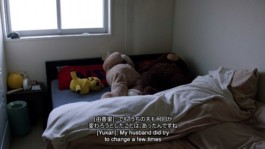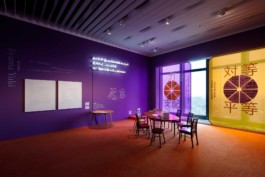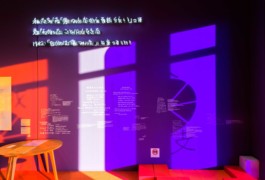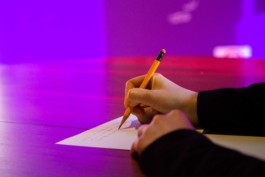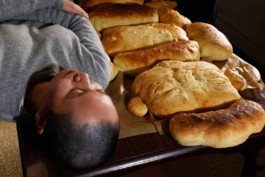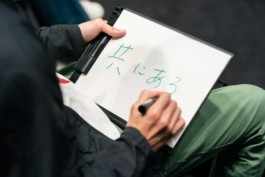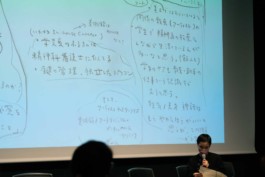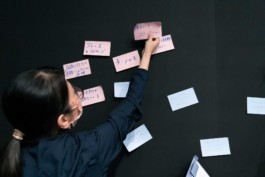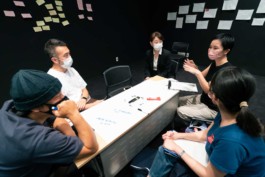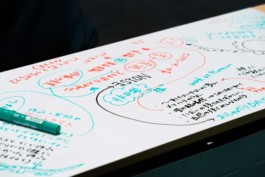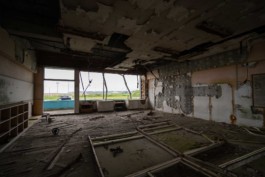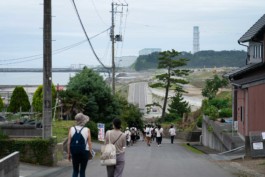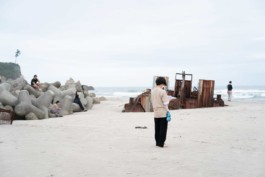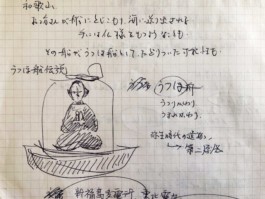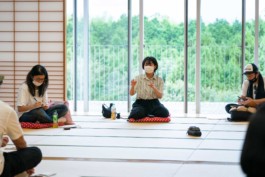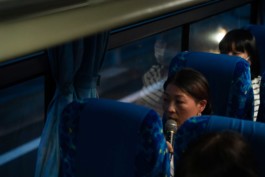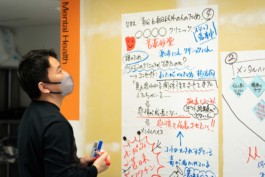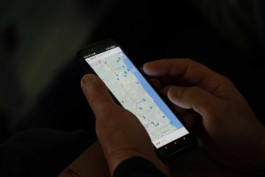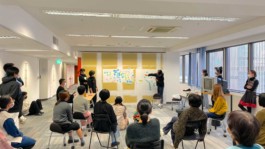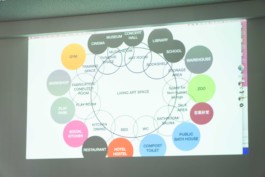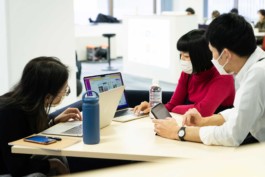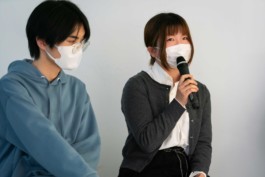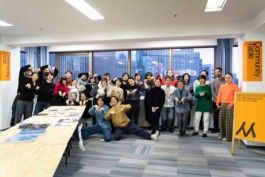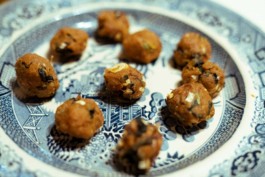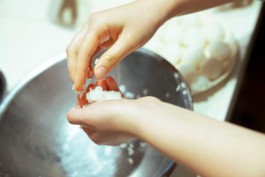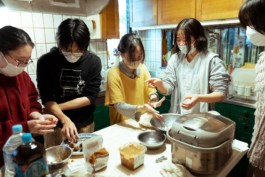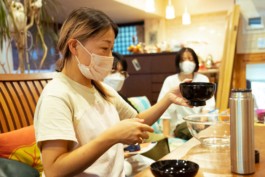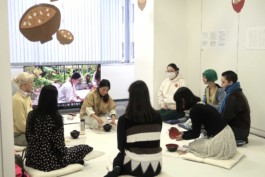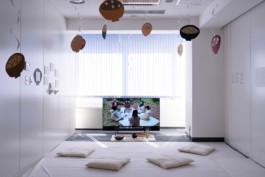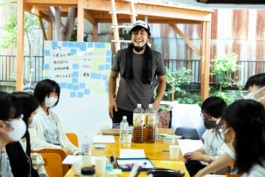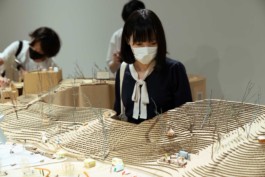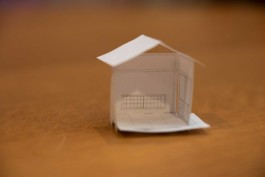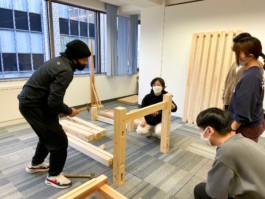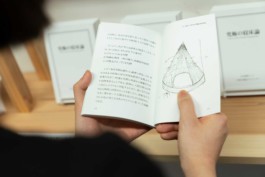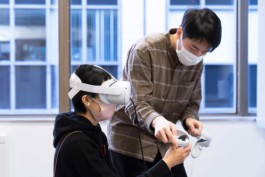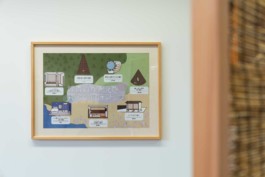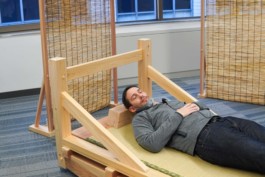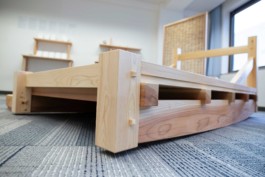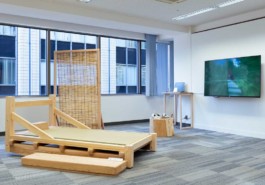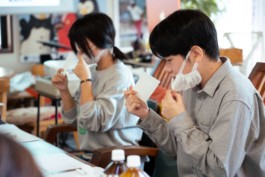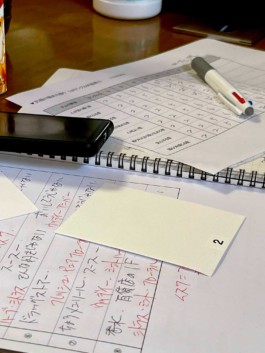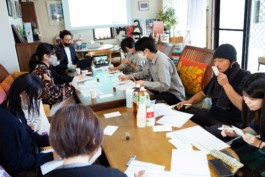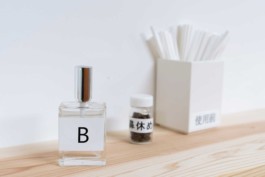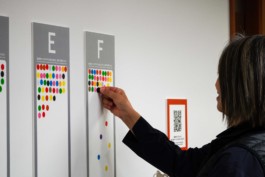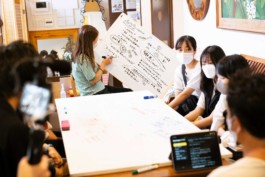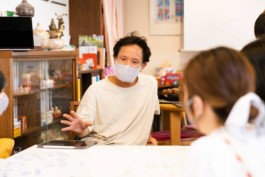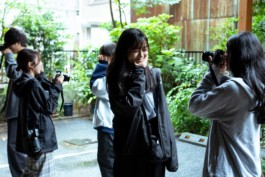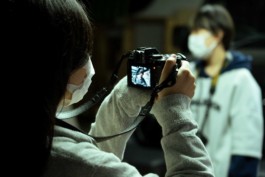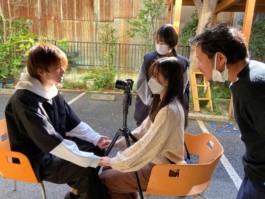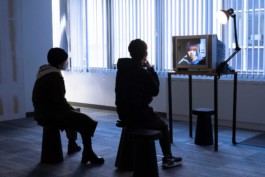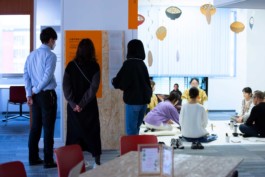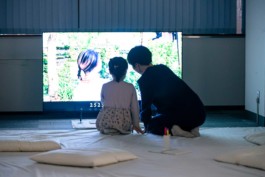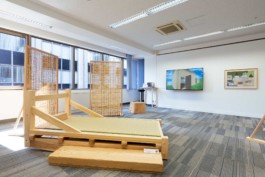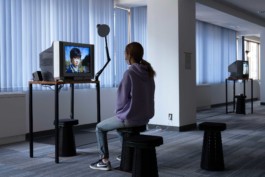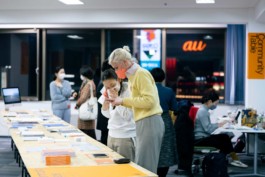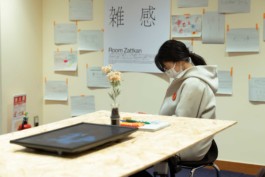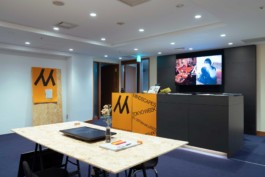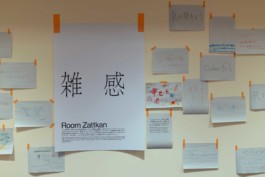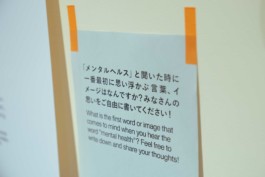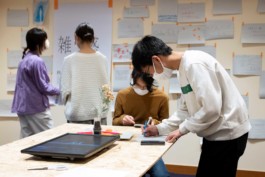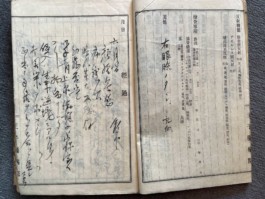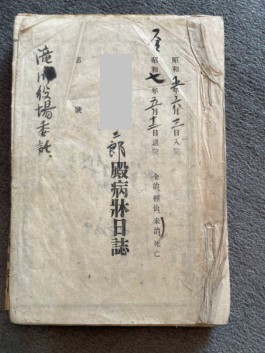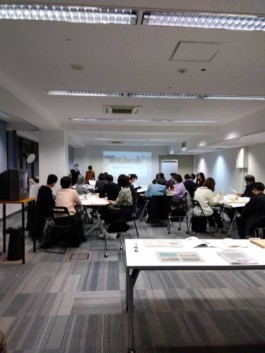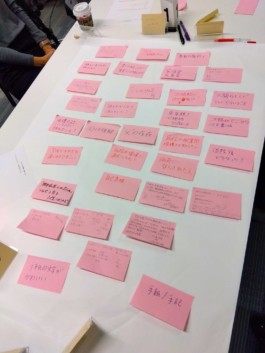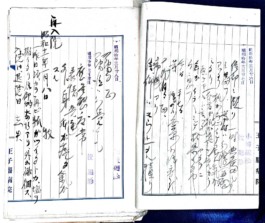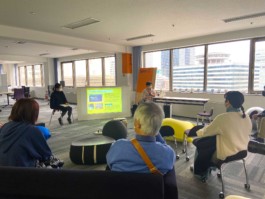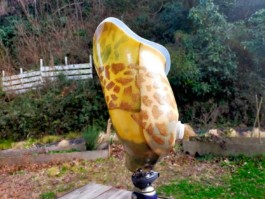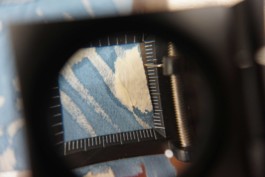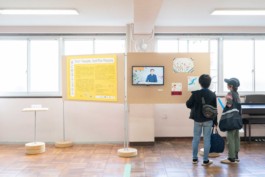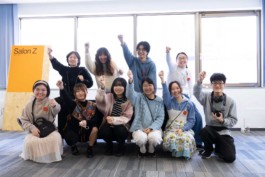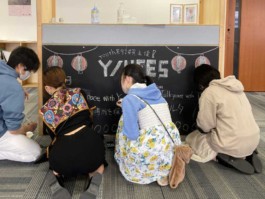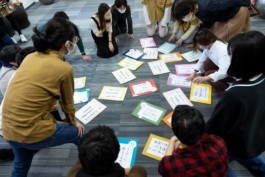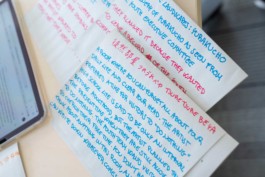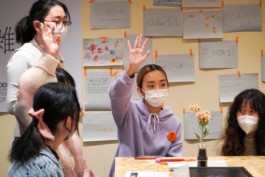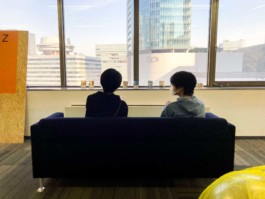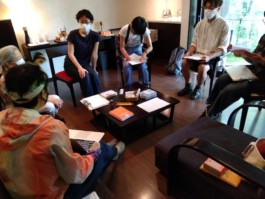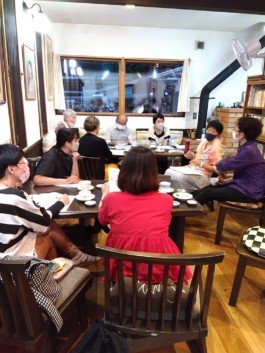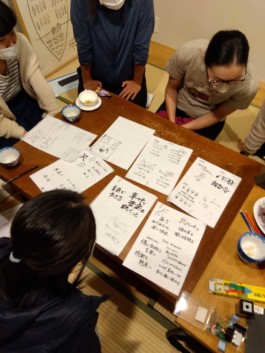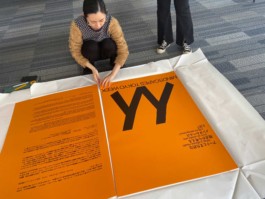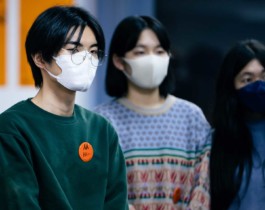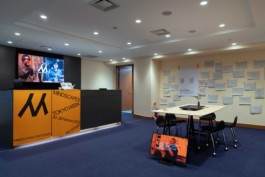Mindscapes Tokyo was a platform for exploring mental health through multiple viewpoints and local cultural contexts. It engaged a diverse group of people with the primary goal of deepening participants’ understandings of mental health and its relevance to everyone. It also explored how arts and culture can address mental health and wellbeing by fostering fruitful exchanges through arts programming rooted in daily lives. Organised by InVisible with the Mori Art Museum, Mindscapes Tokyo was led by artistic director KIKUCHI Hiroko alongside NOBORI Kukiko, Mindscapes’ cultural lead in Tokyo. It featured a range of projects, including convenings, participatory workshops with artists and youth, exhibitions, lectures, and public programs in partnership with various organisations. The project culminated in Mindscapes Tokyo Week in February 2023, which showcased outcomes achieved and offered opportunities for further conversations and learnings. inVisible is a non-profit organisation that develops art and creative placemaking projects in Japan.
Mindscapes Tokyo was a platform for exploring mental health through multiple viewpoints and local cultural contexts. It engaged a diverse group of people with the primary goal of deepening participants’ understandings of mental health and its relevance to everyone. It also explored how arts and culture can address mental health and wellbeing by fostering fruitful exchanges through arts programming rooted in daily lives. Organised by InVisible with the Mori Art Museum, Mindscapes Tokyo was led by artistic director KIKUCHI Hiroko alongside NOBORI Kukiko, Mindscapes’ cultural lead in Tokyo. It featured a range of projects, including convenings, participatory workshops with artists and youth, exhibitions, lectures, and public programs in partnership with various organisations. The project culminated in Mindscapes Tokyo Week in February 2023, which showcased outcomes achieved and offered opportunities for further conversations and learnings. inVisible is a non-profit organisation that develops art and creative placemaking projects in Japan.
2020–2023
During her Mindscapes Tokyo residency, IIYAMA Yuki worked on the theme of domestic violence and made an installation based on her research focusing on different voices of victims, proprietors and grassroots supporters. Her installation was presented at the group exhibition “Listen to the Sound of the Earth Turning: Our Wellbeing since the Pandemic,” held at Mori Art Museum from 29 June till 6 November 2022.
Iiyama is interested in societal and individual influences and relationships. Her works have been developed from the research about psychiatry and the family, and the history of psychiatry in Japan.
29 June – 6 November 2022, Mori Art Museum
Listen to the Sound of the Earth Turning explored ways to live a new life as the pandemic persisted, and the nature of “wellbeing” that is the holistic health of both body and mind, from multiple perspectives found in contemporary art. Works on subjects with a connection to life and existence — nature and humans, the individual and society, family, the repetitious nature of daily living, the spiritual world, life and death — encouraged visitors to consider what it means to “live well.”
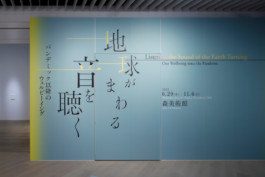
Photo: Koroda Takeru. Photo courtesy: Mori Art Museum, Tokyo
8 July 2022, Mori Art Museum
InVisible hosted the first Convening on the 8th of July, featuring in-person lectures, workshops, and discussions delved from IIYAMA Yuki's installation work, “Shapes of Shadows: Imagined Empathy,” as part of the Mori Art Museum exhibition. The work explored mental health in the context of domestic violence and controlling relationships during the pandemic. Building on this artwork and the exhibition’s focus on “our well-being after the pandemic” as a starting point, our session delved into the potential role of museums and art projects as mental health clinics.
Convening was a series of four sessions held in Tokyo and Fukushima, designed as a dialogue-centered gathering aiming to explore the concept of “mental health” in Japan from diverse perspectives. The overarching question that guided these discussions was: “Could museums and art projects function as mental health clinics?” Through this exploration, the project sought to reevaluate the meaning of “mental health” within the Japanese context, providing participants with an opportunity to reclaim ownership by reassessing its significance.
Participants:
CHEN Dominique (Associate Professor, School of Letters, Arts and Sciences, Waseda University), HAYASHI Takatsune (Architect, Carpenter), IIYAMA Yuki (Mindscapes AIR artist), KATAOKA Mami (Director, Mori Art Museum), KARAKAWA Mayuko (High School student), KIKUCHI Ayako (Psychiatric social worker), LEE Yubin (College student), OTANI Koji (Lawyer/J.D., Certified Public Tax Accountant), SAITO Tamiko (Assistant Manager, Facilities Operations Group, Mori Art Museum), SHINOHARA Fumio (Nurse, JSPS Research Fellow), TOGASHI Taki (Cultural Producer), TOKUYAMA Hirokazu (Associate Curator, Mori Art Museum), TSUKADA Arina (Editor, Curator), UENO Senzo (Filmmaker), YOSHIOKA Yumi (Psychological Counselor), YOSHIHARA Tae (Art Manager and Director), yoyo. (Cook).
OKADA Masumi, KUMAKURA Haruko, SHIRAKI Eise, (Mori Art Museum)
NOBORI Kukiko (Mindscapes Curatorial Research Fellow)
ARAO Masami, ISOGAYA Kayoko, KIKUCHI Hiroko, HAYASHI Akio, SUGIYAMA Yuka (inVisible Tokyo)
Organiser: NPO inVisible
Planning Cooperation: Mori Art Museum
3-4 September 2022, Tomioka, Fukushima Prefecture
In the second Convening, we embarked on a transformative journey focusing on resilience in the face of disasters and societal changes. Our attention turned to Tomioka located in Fukushima prefecture and neighbouring towns deeply affected by the Fukushima Daiichi Nuclear Power Plant accident and the Great East Japan Earthquake. Through an immersive two-day, one-night visit, we connected with local community members, gaining profound insights into their resilience and bearing witness to their remarkable recovery efforts. Our discussions and shared experiences shed light on effective strategies for restoring mental health and fostering stability amidst ongoing changes. Drawing inspiration from the stories that were shared, we collectively explored ways to navigate uncertainties and cultivate wellbeing in the face of adversity.
Convening was a series of four sessions held in Tokyo and Fukushima, designed as a dialogue-centered gathering aiming to explore the concept of “mental health” in Japan from diverse perspectives. The overarching question that guided these discussions was: “Could museums and art projects function as mental health clinics?” Through this exploration, the project sought to reevaluate the meaning of “mental health” within the Japanese context, providing participants with an opportunity to reclaim ownership by reassessing its significance.
Participants:
CHEN Dominique (Associate Professor, School of Letters, Arts and Sciences, Waseda University), HAYASHI Takatsune (Architect, Carpenter), IIYAMA Yuki (Mindscapes AIR artist), KARAKAWA Mayuko (High School student), KIKUCHI Ayako (Psychiatric social worker), LEE Yubin (College student), OTANI Koji (Lawyer/J.D., Certified Public Tax Accountant), SHINOHARA Fumio (Nurse, JSPS Research Fellow), TOGASHI Taki (Cultural Producer), UENO Senzo (Filmmaker), YOSHIOKA Yumi (Psychological Counselor), YOSHIHARA Tae (Art Manager and Director), yoyo. (Cook).
OKADA Masumi, KUMAKURA Haruko, SHIRAKI Eise, (Mori Art Museum)
NOBORI Kukiko (Mindscapes Curatorial Research
ARAO Masami, KIKUCHI Hiroko, HAYASHI Akio (inVisible)
Organiser: NPO inVisible
Planning Cooperation: Mori Art Museum
18-19 February 2023, YAU STUDIO
Building upon the previous three sessions, we held the final Convening on the 18th and 19th of February, 2023. Its objective was to address the question, “Can museums and art projects become mental health clinics?” During this session, we conducted a workshop to imagine and develop six concrete concepts for what it would look like if we were to build a mental health clinic from arts and cultural perspectives, aiming to transition into a more tangible next phase of our journey.
Convening was a series of four sessions held in Tokyo and Fukushima, designed as a dialogue-centered gathering aiming to explore the concept of “mental health” in Japan from diverse perspectives. The overarching question that guided these discussions was: “Could museums and art projects function as mental health clinics?” Through this exploration, the project sought to reevaluate the meaning of “mental health” within the Japanese context, providing participants with an opportunity to reclaim ownership by reassessing its significance.
Participants:
CHEN Dominique (Associate Professor, School of Letters, Arts and Sciences, Waseda University), HAR Jooun (Graduate student), HAYASHI Takatsune (Architect, Carpenter), IIYAMA Yuki (Mindscapes AIR artist), ITO Misaki (High school student), KARAKAWA Emiko (Art Coordinator, Hotch no Lodge), KARAKAWA Mayuko (High school student), KIKUCHI Ayako (Psychiatric social worker), KIYOTA Yui (High school student), KUBOYA Himari (High school student), KUNITA Aoi (High school student), LEE Yubin (College student), MI ShuZhen (College student), OTANI Koji (Lawyer/J.D., Certified Public Tax Accountant), SHINOHARA Fumio (Nurse, JSPS Research Fellow), TOGASHI Taki (Cultural Producer), UENO Senzo (Filmmaker), YOSHIOKA Yumi (Psychological Counselor), YOSHIHARA Tae (Art Manager and Director), yoyo. (Cook).
OKADA Masumi, KUMAKURA Haruko, SHIRAKI Eise (Mori Art Museum)
NOBORI Kukiko (Mindscapes Curatorial Research Fellow)
ARAO Masami, ISOGAYA Kayoko, KIKUCHI Hiroko, HAYASHI Akio (inVisible)
Organiser: NPO inVisible
Planning Cooperation: Mori Art Museum
Research, Workshops, Exhibition
June 2022–March 2023, Tokyo Garage
What kind of place would you imagine as a “place that handles the heart”? Inspired by the shortage of places and time in Japanese cities to address one’s mental health, the food team, led by the lead Investigator yoyo* and six youth investigators, developed “Misoshiru Temae” — a ceremony of preparing the mind. The ceremony consisted of preparing Miso soup together. Each ceremony was captured in a form of video instructions created with the unique perspectives of the youth investigators, and offered opportunities to confront the self and reclaim lost time in fast-paced cities.
The Urban Investigation Project was a co-creative and experimental art initiative that explored mental health in urban areas, specifically in Tokyo. Placing emphasis on the process itself, the project integrated understanding and insights into each endeavor, fostering continuous learning and meaningful communication. Through the creation of “artwork proposals”, the project offered innovative solutions, thought-provoking tools, and actionable perspectives, serving as a catalyst for unique approaches and dialogue on urban mental health. Selected findings and outcomes were showcased in an open studio format during MINDSCAPES TOKYO WEEK in February 2023, providing an opportunity for public engagement and discussion.
The Food Team Members:
HIROSAKI Moe, KUNITA Aoi, KUBOYA Himari, TOKISUE Reika, MI ShuZhen, NAKAI Yuuna, yoyo.
*yoyo, a cook originally from Tokyo and currently based in Niigata City, uses cooking to create a world where everyone can live a rich life regardless of their circumstances.
Research, Workshops, Exhibition
June 2022–March 2023, Tokyo Garage
Due to various factors like lifestyle habits and daily stress, a person’s unique environment plays a crucial role in ensuring they feel a sense of ease and the ability to sleep. With this in mind, lead investigator HAYASHI Takatsune (architect/carpenter) with a team of eight young people assembled for the Urban Investigation Project embarked on a series of experimental investigations and fieldwork to explore the concept of the “ultimate sleeping place.” Their endeavors involved mindful walks through the streets of Tokyo, engaging dialogues, and visits to a long-established bedding store and a disaster prevention center. The outcomes of their research took various forms, including the publication of a book titled “Theory of the Ultimate Sleeping Place”, a virtual reality world tour crafted using individually hand-made maquettes, and the creation of a cradle-like ultimate sleeping bed that incorporates the ideas and research findings of all participants.
The Urban Investigation Project was a co-creative and experimental art initiative that explored mental health in urban areas, specifically in Tokyo. Placing emphasis on the process itself, the project integrated understanding and insights into each endeavor, fostering continuous learning and meaningful communication. Through the creation of “artwork proposals”, the project offered innovative solutions, thought-provoking tools, and actionable perspectives, serving as a catalyst for unique approaches and dialogue on urban mental health. Selected findings and outcomes were showcased in an open studio format during MINDSCAPES TOKYO WEEK in February 2023, providing an opportunity for public engagement and discussion.
The Japanese Architecture Team Members:
HAYASHI Takatsune, ITO Misaki, LEE Yubin, KAMISATO Mahiro, KIYOTA Yui, KUDO Eika, SHIBATA Sora, YOKOMI Kenichi, Rain
HAYASHI Takatsune, an architect and carpenter, with over 20 years of experience, preserves Japanese wooden architecture and engages in community development, workshops, and art and digital architecture projects nationwide.
Research, Workshops, Exhibition
June 2022–March 2023, Tokyo Garage and YAU STUDIO
inVisible collaborated with SHIONO KORYO KAISHA, LTD. and KITCHIBE CO., LTD. to organise workshops dedicated to the exploration and creation of the perfect scent for sleep environments. These workshops were an integral part of the Urban Investigation team’s efforts to delve into the concept of the ultimate “sleep place” from a Japanese architectural perspective. During the Mindscapes Tokyo Week, the culmination of the team’s year-long efforts, they set up an interactive survey booth. Visitors had the unique opportunity to actively engage in the selection process for the ultimate fragrance.
Research, Workshops, Exhibition
June 2022–March 2023, Tokyo Garage
A Film Team, assembled for the Urban Investigation Project, led by Senzo Ueno (cinematographer/filmmaker) alongside five youths, embarked on a project to explore the meaning of a “normal person”. Through in-depth investigation and conversations, they established a guiding principle for their work: to film interview footage with a sense of closeness, maintaining eye contact, and fostering empathy. Following this idea, young people filmed their significant others in intimate two-person settings, close enough to touch. Through the sincere gaze of these teenagers, a multitude of perspectives on “being normal” emerged, prompting profound questions and shedding new light on the societal constructs that influence our perception of what is considered “normal”.
The Urban Investigation Project was a co-creative and experimental art initiative that explored mental health in urban areas, specifically in Tokyo. Placing emphasis on the process itself, the project integrated understanding and insights into each endeavor, fostering continuous learning and meaningful communication. Through the creation of “artwork proposals”, the project offered innovative solutions, thought-provoking tools, and actionable perspectives, serving as a catalyst for unique approaches and dialogue on urban mental health. Selected findings and outcomes were showcased in an open studio format during MINDSCAPES TOKYO WEEK in February 2023, providing an opportunity for public engagement and discussion.
Film team:
ARAI Yuto, IWAI Rin, KOHAZAME Miku, ONISHI Mitsuki, TAMATANI Sora, UCHIYAMA Haruka, UENO Senzo
UENO Senzo, a cinematographer/filmmaker, creates films, advertisements, and music videos. He produces documentaries exploring nature, social issues, and presents installations at art festivals.
Workshop, Talks, Events, Exhibitions
20–28 February 2023, YAU STUDIO
Mindscapes Tokyo Week was the culmination and celebration of inVisible’s endeavors, held at YAU STUDIO located in central Tokyo. We curated a range of engaging activities, including the youth-led festival Y/U FES, thought-provoking salon-style discussions featuring guest speakers, showcases of findings from the Urban Investigation Projects, and a community table introducing our Mindscapes partners. These programs and social activities aimed to spark conversations about mental health, foster connections, and inspire participants with renewed purpose, encouraging them to take concrete steps to collaborate to create collective wellbeing.
This event was made possible with the generous support of Yurakucho Art Urbanism.
Research, Workshops, Exhibition
20–28 Feburary 2023, YAU STUDIO
Room Zattkan was an interactive project where visitors to the Mindscapes Tokyo Week took part in expressing their thoughts in response to the question: What is the first word or image that comes to your mind when you hear the words “Mental Health”? The term Zattkan (雑感) became a key element of Mindscapes Tokyo, representing a distinctive Japanese expression that fosters a culturally sensitive environment for open and uninhibited reflection. The collection of people’s Zattkan embraced diverse thoughts, feelings, and perceptions that coexisted without a clear structure or coherence. InVisible’s focus was to capture this wide range of personal and vulnerable responses related to the concept of mental health.
Friday, 24 February 2023, YAU STUDIO
In cooperation with the Komine Institution, inVisible held a workshop focusing on the archive of a now-defunct mental hospital in Tokyo to indicate how the concept of mental health was historically and culturally constructed. After a short lecture about the archive, participants were encouraged to collaboratively work on the archival material to reconstruct the story of those who were diagnosed as “dementia praecox”, “psychosis” and other diagnoses used in the early 20th Century. The aim of this workshop was not to apply another contemporary disease name to those cases, but to imagine how those “patients” lived and experienced their lives.
Facilitators: SHIMIZU Fusako (Tokyo University), MIHARA Sayaka (Keio University), KANAGAWA Shingo (Photographer), HOGETSU Rie (Ochanomizu University), NOBORI Kukiko (JSPS).
This workshop was held within the framework of Mindscapes Tokyo Week.
with AOKI Akira
Saturday, 25 February 2023, YAU STUDIO
inVisible invited AOKI Akira, an independent curator, to give a lecture about “art and care” based on his research and own experiences. It covered a broad range of topics such as the Settlement movement, occupational therapy, phantom pain and artificial limbs, and an “urgent creativity”. Those topics were closely intertwined with each other. AOKI gave case studies to make it clear how they were related in terms of our “creativity”.
Situating art as a tool to live better lives, AOKI has been collaboratively developing various projects with artists, companies, local communities and governments.
This lecture was held within the framework of Mindscapes Tokyo Week in cooperation with Anthropology and Contemporaneous Art Study Group.
23 and 26 February 2023, YAU STUDIO
Y/U FES was a youth-led festival organised by the Mindscapes Tokyo Week (MTW) Youth Committee, comprising twelve young people from those who participated in the Urban Investigation Projects. Initially formed to support the operation of the MTW, the committee came up with the idea of holding a festival to express their ideas to engage young people and further address their mental health needs. The festival showcased a diverse array of programs, including “MTW Talkspace With Youth”, one-on-one consultations with youth, “Tsurezure Room” designed to empty one’s mind, and a “Memory Karuta” tournament with an original set of oversized traditional playing cards created from collective reflections of Mindscapes Tokyo, and many more.
MTW Youth Committee:
ITO Misaki, KARAKAWA Mayuko, KIYOTA Yui, KUBOYA Himari, KUNITA Aoi, LEE Yubin, MI ShuZhen, NAKAI Yuuna, NOMURA Yuna, Rain, SHIBATA Sora, TOKISUE Reika
September 2022, Karuizawa Nagano Prefecture
Christine Wong Yap collaborating with Hotch No Lodge Clinic
Hotch No Lodge is a clinic/day care centre offering internal medicine, pediatrics, palliative outpatient care and home visit medical/nursing care services, day care services for the elderly and children with special medical needs, and childcare services for sick children. As Hotch No Lodge has been interested in developing more effective Advance Care Planning (ACP), artist Christine Wong Yap prepared her workshops, with a clinic’s art coordinator Emiko Karakawa, that could resonate with ACP in the broad perspective. Five workshops were held during her residency at various places in the town such as cafes, an after-school activity class, and the clinic itself. Wong Yap prepared worksheets for participants to visualise their best possible life in ten years. Participants also enjoyed drawing spark joy cards filled with tips and ideas to make our everyday lives full of joy.
Research, Design
inVisible decided to create their own logo to symbolise the local activities reflecting the goals of Mindscapes. As a result, they worked with graphic designer TANAKA Seri. The kanji character “人” in Japanese is derived from the shape of a person viewed from the side while standing. The "M" in the logo of Mindscapes depicts two “people” leaning against each other. Mental health constantly changes and is shaped through connection between individuals. At the same time, this logo symbolises the idea that mental health is both difficult to maintain “standing alone” and requires us to support and lean on one another.
TANAKA Seri is a Tokyo-based graphic designer, working on branding, visual identity, advertising, and package design. She designed the logos for SENKIN, a sake brewery, and Ao-Hata Bookstore, as well as the poster design for an exhibition at the Mori Art Museum. She also published individual works.
